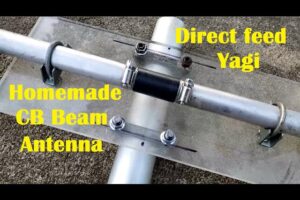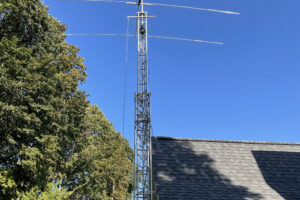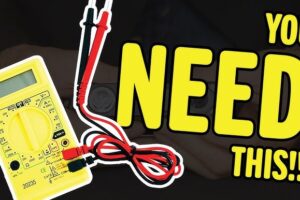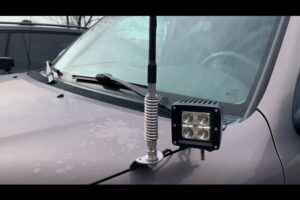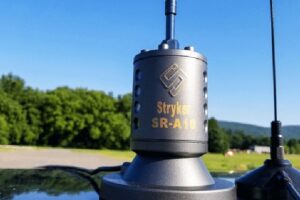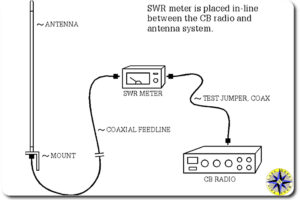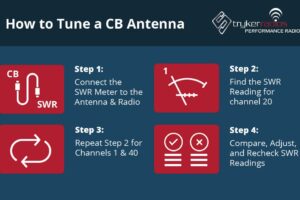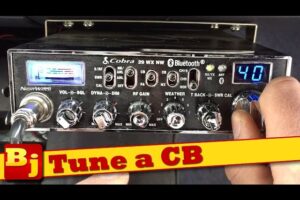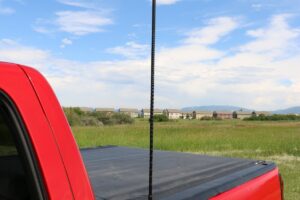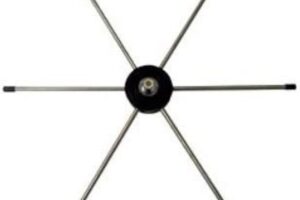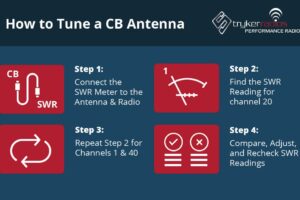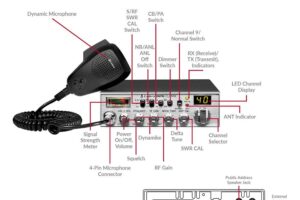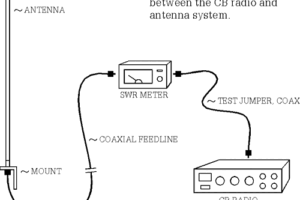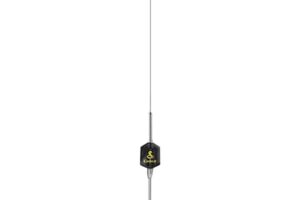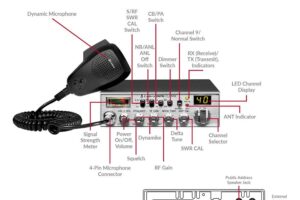How to Make a Dipole Antenna for CB Radio: Step-by-Step Guide
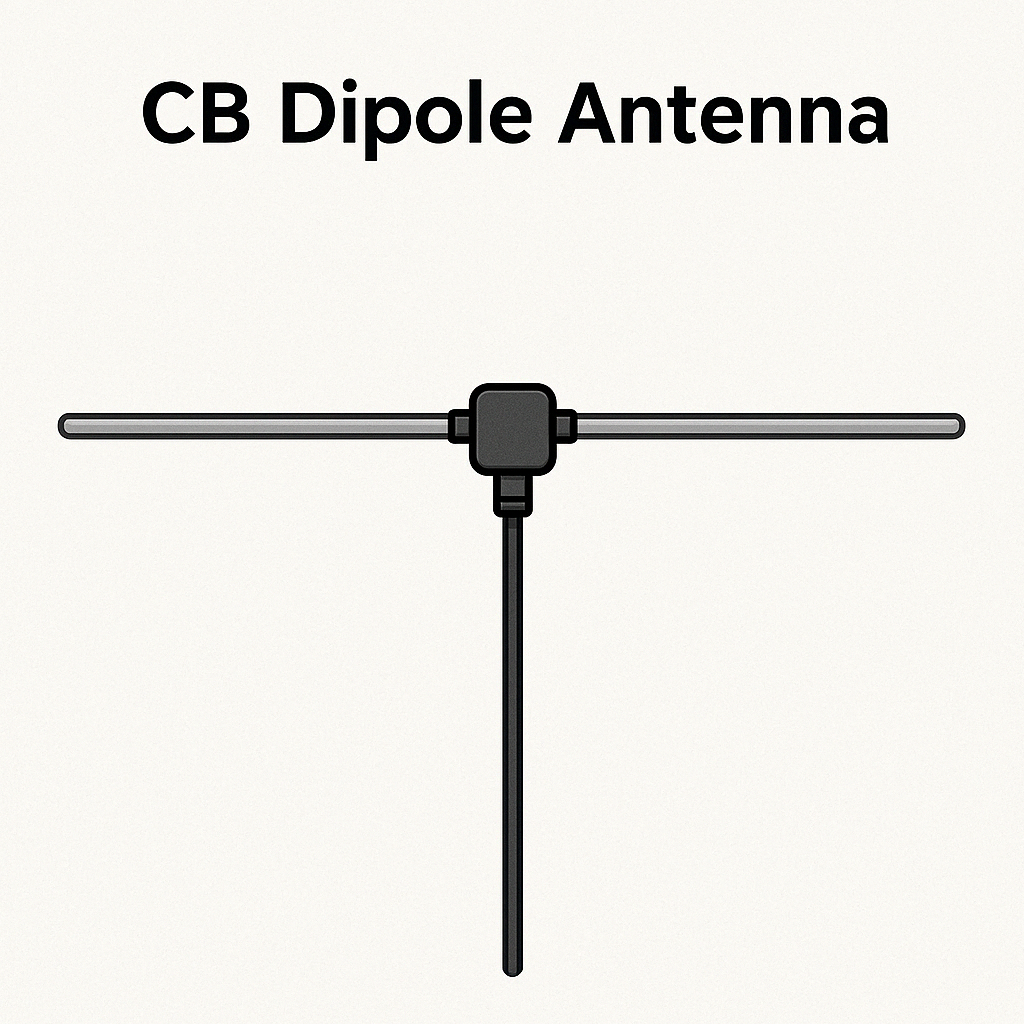
To make a dipole antenna for a CB radio, you need a few basic tools and materials. First, measure and cut two lengths of wire.
These wires will form the two halves of the dipole. Learning to make a dipole antenna for your CB radio can be a rewarding project. A dipole antenna can greatly improve your radio’s performance. It allows for better signal reception and transmission.
You don’t need to be an expert to create one. With some simple steps and a bit of patience, you can build your own effective antenna. This guide will help you understand the process and provide clear instructions. Let’s get started on making your dipole antenna for better CB radio communication.
Introduction To Dipole Antennas
Building a dipole antenna for your CB radio can boost your signal quality. It is a simple project that offers great results. This article will guide you through the process.
What Is A Dipole Antenna?
A dipole antenna is a type of radio antenna. It consists of two conductive elements. These elements are usually wires or rods. They are of equal length and mirror each other. The antenna captures radio waves and transmits them to your CB radio.
Benefits Of Using A Dipole Antenna
Dipole antennas are easy to make. They do not require many parts. You can build one with basic tools. They are also efficient. They provide good reception and transmission. This means clearer communication on your CB radio.
Dipole antennas are also versatile. You can use them in different locations. They work well indoors and outdoors. You can mount them on a wall or a pole. This flexibility makes them a great choice for CB radio users.

Credit: www.linuxwolfpack.com
Materials Needed
To make a dipole antenna for CB radio, gather coaxial cable, wire, connectors, and insulators. You will also need a soldering iron, tape measure, and basic tools.
If you’re keen to improve your CB radio experience, building your own dipole antenna is a great project. Getting the right materials is crucial for success. You don’t need to be a tech genius; just follow the steps and gather the necessary items.
###
Essential Tools
You will need a few basic tools to get started.
A soldering iron is crucial for connecting wires. Make sure it’s one you are comfortable using.
Wire cutters and strippers are also essential. They help you trim and prepare the wires to the correct length.
A measuring tape is needed to measure the precise lengths of wire. Accuracy is key here.
Lastly, don’t forget safety goggles. Protect your eyes while working with tools.
###
Required Components
Let’s talk about the components you’ll need.
First, you need coaxial cable. RG-58 or RG-8X cables are common choices. They are flexible and easy to work with.
Next, you’ll need insulated wire. About 18-20 gauge should do the trick. Make sure you have enough for both sides of the dipole.
You will also need connector plugs. PL-259 connectors are standard for CB radios.
Consider end insulators for your wires. They help to keep the ends of your antenna securely tied down.
Lastly, grab some electrical tape. This will help secure your connections and keep things neat.
By gathering these materials, you’re setting yourself up for a smooth antenna-building process. Do you have all these items at home? If not, a quick trip to your local hardware store will get you ready to go.
Safety Precautions
Building a dipole antenna for CB radio is an exciting project. Safety should always be your priority. This guide covers essential safety precautions.
Handling Tools Safely
Using tools can be dangerous. Always wear gloves and safety glasses. Protect your eyes from flying debris. Gloves prevent cuts and bruises.
Keep tools organized. An organized workspace reduces accidents. Store sharp tools safely. Ensure they are out of reach of children.
Handle power tools with care. Unplug them when not in use. Inspect tools for damage regularly. Replace damaged tools immediately.
Working With Electrical Components
Working with electrical components requires caution. Always turn off power before starting. Use insulated tools for extra safety. Avoid working near water.
Follow wiring diagrams precisely. Incorrect wiring can be hazardous. Double-check connections before powering up. Ensure all connections are secure.
Use proper grounding techniques. Grounding prevents electrical shocks. Consult a professional if unsure. Better safe than sorry.

Credit: m.youtube.com
Measuring And Cutting The Wire
Creating a dipole antenna for your CB radio starts with measuring and cutting the wire. This step is crucial. It ensures your antenna will work correctly. Follow these guidelines to make sure you do it right.
Choosing The Right Wire Length
The first step is choosing the correct wire length. Measure the length based on the frequency you wish to use. For CB radios, the standard frequency is 27 MHz. To calculate the wire length, use the formula: 468 divided by the frequency in MHz. For 27 MHz, the length should be around 17.33 feet. This length will give you two equal halves for the dipole antenna.
Proper Cutting Techniques
Once you have measured the wire, it’s time to cut it. Use a sharp wire cutter for clean cuts. Cut the wire carefully to avoid any frayed edges. Ensure the cuts are precise. This will improve the antenna’s performance. After cutting, check the ends for any loose strands. If found, trim them neatly. Proper cutting ensures a strong signal and good connection.
Assembling The Antenna
Creating a dipole antenna for a CB radio involves connecting two equal lengths of wire to form a simple, yet effective design. Attach the wires to an insulated center connector, ensuring they are securely fastened. Finally, connect the antenna to your CB radio, and you’re ready to start communicating.
Assembling the Antenna
Assembling a dipole antenna for your CB radio is a fun and rewarding project. You’ll need some basic tools and materials, but don’t worry—it’s simpler than you might think. Let’s walk through the process step by step.
Connecting The Wires
First, gather your materials. You’ll need two lengths of wire, typically around 8.5 feet each for a CB radio.
Start by stripping about an inch of insulation from the ends of each wire. This will allow for a good connection.
Then, connect these wires to a center insulator. This insulator will serve as the feed point for your antenna. Attach one wire to each side of the insulator. Ensure the connections are tight and secure.
Securing The Connections
Now that your wires are connected, it’s crucial to secure these connections. Loose connections can lead to poor performance or even damage your radio.
Use a soldering iron to solder the wires to the insulator. This creates a strong, stable connection that won’t easily come apart.
Once soldered, cover the connections with heat shrink tubing or electrical tape. This adds an extra layer of protection against the elements.
Remember, the quality of your connections can make or break your antenna’s performance. Take your time and ensure everything is done correctly.
Have you ever had an antenna fail due to a loose connection? It’s frustrating, but avoidable. By securing your connections well, you’ll ensure your dipole antenna performs reliably for years to come.
Installing The Antenna
Installing the antenna is a crucial step in ensuring optimal performance of your CB radio. A well-installed dipole antenna can significantly enhance your radio’s range and clarity. Follow these simple steps to get your antenna up and running.
Choosing The Installation Location
Select a high and clear spot for your antenna. Avoid areas with large metal objects or tall buildings. These can interfere with the signal. The roof of your house or a tall tree are good options. Ensure the chosen spot is safe and stable for mounting.
Mounting The Antenna
Securely mount the dipole antenna using strong brackets or clamps. Ensure it is tightly fastened to avoid movement. Use weather-resistant materials to prevent damage from the elements. Connect the coaxial cable to the antenna and route it to your CB radio. Double-check all connections to ensure they are tight and secure.
Tuning The Antenna
Crafting a dipole antenna for CB radio can improve signal clarity and range. First, gather materials like wire and insulators. Then, measure and cut the wires to the correct length.
Tuning the Antenna
Tuning your dipole antenna is crucial for optimal performance. This step ensures that your CB radio communicates clearly and effectively. Without proper tuning, you could experience poor signal quality or interference.
Using An Swr Meter
An SWR (Standing Wave Ratio) meter is essential for tuning your dipole antenna. It measures the efficiency of your antenna system. Connect the SWR meter between your CB radio and the antenna.
Turn on your CB radio and set it to channel 20. This is a good midpoint for calibration. Key the microphone and observe the SWR reading.
A reading close to 1:1 is ideal. If the reading is higher, it indicates inefficiency in your antenna setup. This requires adjustment to lower the SWR.
Adjusting For Optimal Performance
Adjusting the antenna length is a practical way to improve your SWR readings. If the SWR is high on lower channels, your antenna is too short. Lengthen it slightly.
Conversely, if the SWR is high on higher channels, your antenna is too long. Shorten it a bit. Make small adjustments and recheck the SWR reading each time.
Patience is key. Small, incremental changes will lead to the best results. Don’t rush this process.
Have you ever wondered why some CB radio setups work better than others? The secret often lies in meticulous tuning. Your efforts here will pay off with clear communication and better range.
By following these steps, you can ensure your dipole antenna is perfectly tuned. You’ll be amazed at the difference it makes in your CB radio experience.
Testing The Antenna
Once your dipole antenna for CB radio is assembled, testing is crucial. Testing ensures the antenna works correctly. It also helps identify any issues. Let’s explore how to test your antenna efficiently.
Performing Signal Tests
First, connect your CB radio to the antenna. Turn on the radio. Tune to a clear channel. Listen for a strong, clear signal. This indicates the antenna is receiving well.
Next, transmit a signal. Ask for a signal report from other CB users. Good reports mean your antenna is transmitting well. Poor reports suggest adjustments may be needed.
Troubleshooting Common Issues
If you encounter issues, don’t worry. Check the antenna connections first. Loose or corroded connections can cause problems. Tighten and clean them if necessary.
Examine the antenna’s placement. Ensure it’s mounted high and clear of obstructions. Objects like walls or trees can interfere with the signal.
Use an SWR meter for more detailed testing. High SWR readings indicate issues. Adjust the antenna length if needed. Sometimes, even small changes can improve performance.
Maintenance Tips
Build a dipole antenna for CB radio using simple materials. Attach wires to a central insulator, ensuring proper length. Securely mount and adjust for optimal signal reception.
Maintaining your dipole antenna for CB radio is crucial for ensuring its longevity and performance. Regular upkeep can save you from unexpected issues and keep your communication clear and strong. Let’s dive into some essential maintenance tips to keep your dipole antenna in top shape.
Regular Inspections
Make it a habit to inspect your antenna at least once a month. Look for any visible damage, such as cracks or bends in the elements. These can affect signal strength.
Check the connections. Ensure they are tight and free from corrosion. A loose or corroded connection can lead to poor performance or even complete signal loss.
Don’t forget to assess the mounting hardware. Ensure all screws and bolts are secure. This prevents the antenna from shifting or falling, which could cause damage.
Cleaning And Care
Clean your antenna regularly to remove dirt and debris. Use a damp cloth and mild detergent. Avoid harsh chemicals that could damage the antenna’s surface.
If you live in an area with salty air, like near the coast, clean the antenna more frequently. Salt can corrode metal parts quickly.
Protect the antenna from extreme weather. If a storm is coming, consider taking it down if possible. This prevents potential damage from high winds or lightning.
By taking these simple steps, you can ensure your dipole antenna remains in excellent condition. What other maintenance tips do you follow to keep your CB radio setup running smoothly? Share your experiences in the comments!

Credit: www.youtube.com
Frequently Asked Questions
How Long Should A Cb Dipole Antenna Be?
A CB dipole antenna should be 18 feet long. This length ensures optimal performance and signal reception for CB radios.
What Is The Best Material For A Dipole Antenna?
Copper is the best material for a dipole antenna. It offers excellent conductivity and durability, ensuring optimal performance.
What Is The Disadvantage Of A Dipole Antenna?
Dipole antennas have limited bandwidth, which restricts frequency range performance. They can be prone to interference and signal loss. Installation may require precise alignment and space. They are generally less efficient compared to other antenna types, affecting overall signal quality.
What Is The Formula For A Dipole Antenna?
The formula for a dipole antenna’s length is: Length (in meters) = 150 / Frequency (in MHz). This provides a half-wavelength dipole.
Conclusion
Building a dipole antenna for CB radio is rewarding. You gain hands-on experience. It improves radio communication quality. Follow the steps carefully. Ensure proper measurements and connections. Enjoy clearer signals. Feel accomplished with your DIY project. This antenna can enhance your CB radio performance.
It provides a practical solution for better connectivity. Share your success with friends. Inspire them to try it too. Keep learning and experimenting. Discover more radio projects. Dive deeper into this fascinating hobby. Enjoy the journey of radio building. Stay curious and creative.

